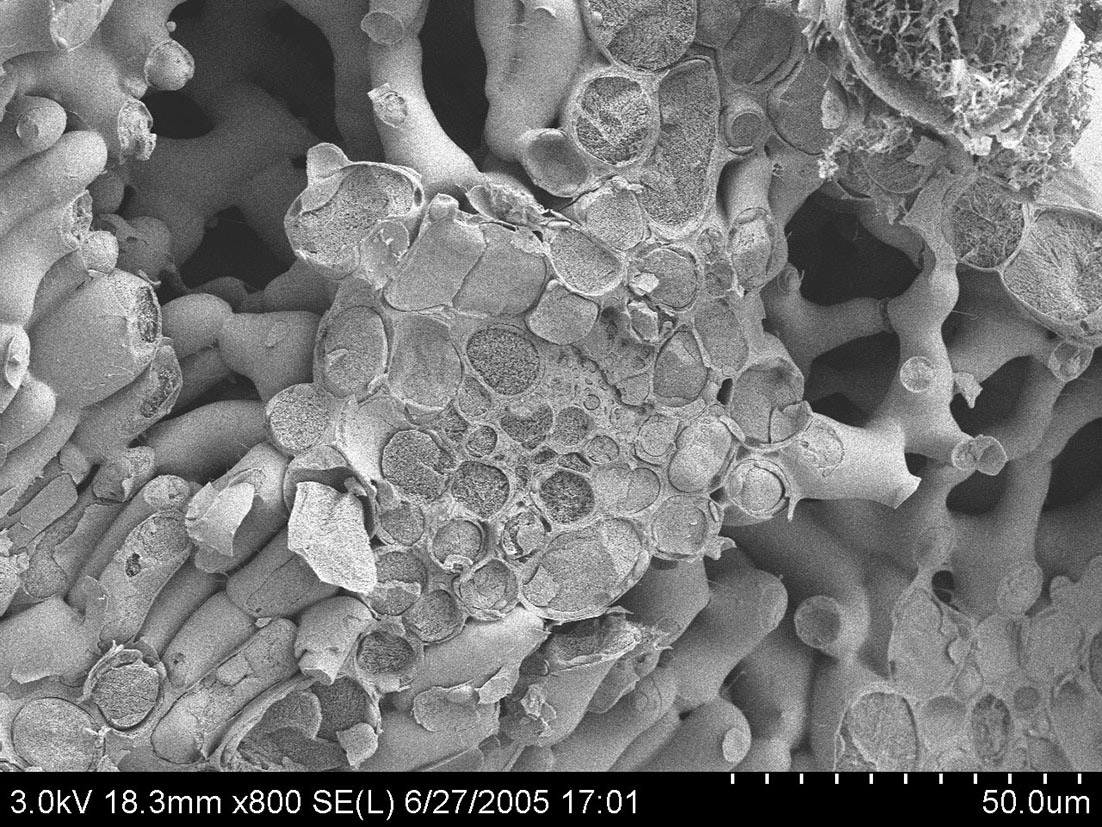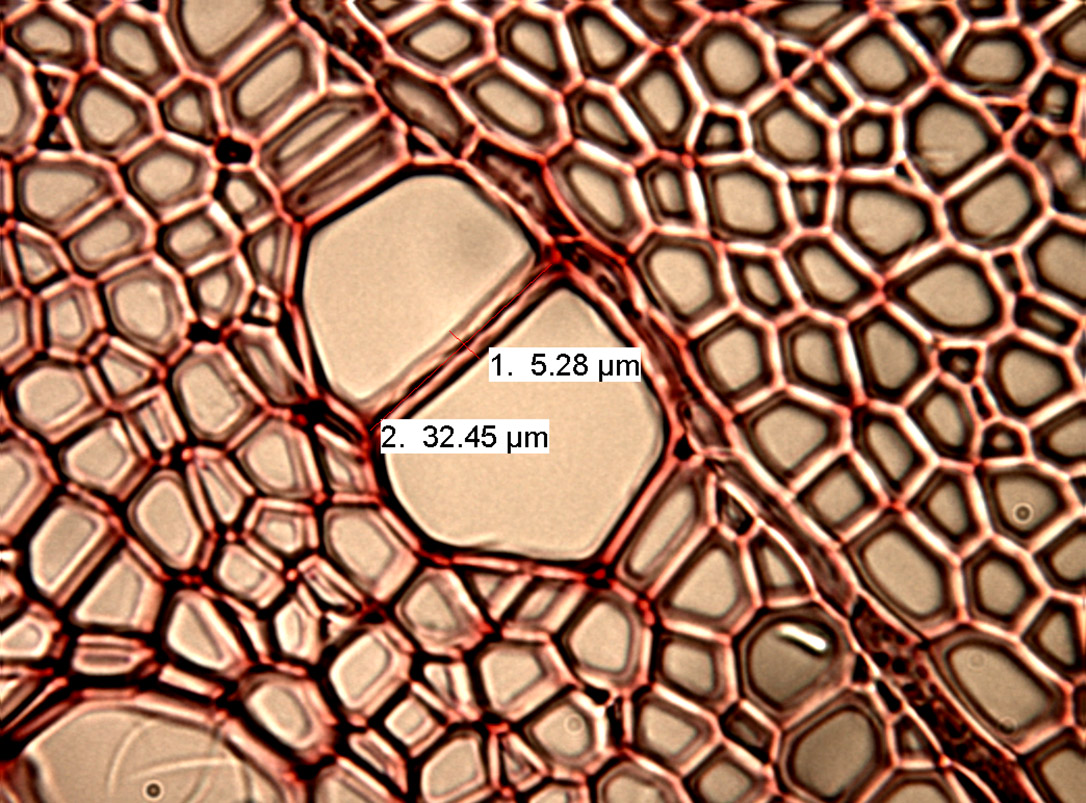A01 > Transport of heat and mass in natural porous materials with graded structure: from functional properties of plant tissues towards customised construction materials
Principal Investigators
Prof. Dr.-Ing. Wolfgang Ehlers (S-MIB)
PD Dr. rer. nat. Anita Roth-Nebelsick (SMNS)
Research Team
Rena Schott, M.Sc.
Lukas Eurich, M. Sc.
Dr.-Ing. Arndt Wagner
During their evolutionary history, plants have developed an amazing resistance to various weather conditions. This is particularly evident when regarding frost-resistant plants, which are able to withstand many freezing and thawing cycles without any damage. Since plant tissues are formed by highly ordered arrangements of single cells with prescribed size, shape and cell-wall properties, they represent graded (anisotropic) natural porous materials. These structural traits are involved in dealing with frost events. In contrast, a phase change of the pore-water content within standard construction materials from water to ice frequently leads to damage, typically caused by repeated thawing and freezing cycles associated with volume changes of the pore water.
Since plants have developed individual strategies to adapt to various circumstances, it is the goal of this proposal to transfer some of these properties to industrially feasible, porous construction materials. Our intention is to obtain optimal building-physical properties with regard to frost resistance, thermal isolation and moisture transport in heterogeneous porous structures. To achieve this goal, several steps are necessary. Firstly, suitable frost-hardy plant species and plant parts, such as wood, must be selected. Secondly, distinct physical processes occurring within the microstructure of these plants must be studied via experiments under various temperature and moisture conditions. In this regard, interferences by metabolic processes must be reduced via the elimination of the influence of living cells. Thirdly, these experiments must be analysed in terms of damage, deformation of cells and tissues and the distribution of ice and gas spaces both qualitatively and quantitatively. In addition to these strategies, an accompanying customised modelling strategy is needed to integrate the functional behaviour of plants, i. e. their mass- and heat-transport properties, into a continuum-mechanical modelling approach. In this regard, standard continuum-mechanical models have to be extended for the description of the processes occurring in multicomponent tissue aggregates. In particular, the microstructural architecture of the solid skeleton under study and the phase-transition processes of pore water play a crucial role. To include all these features in a continuum-mechanical setting, we will proceed from the Theory of Porous Media (TPM) providing a suitable methodological framework for multicomponent and multi-physical continua. The development of a meaningful theoretical basis will furthermore enable a numerical investigation, which might clarify the involved processes and aid their detailed study.
Finally, the identified functional properties will be transferred to customised construction materials in the subsequent funding periods. Therefore, the development of appropriate strategies for the transfer of these functions to industrially produced materials is required. This will allow a serial design of artificially created porous materials for specific conditions.

Cryo-SEM image of a frozen leaf of the walnut tree. Cross-fracture, showing leaf tissue and leaf veins.
Cryo-SEM image of a frozen leaf of the walnut tree. Zoom view of of leaf vein, in cross-fracture.
Cross-section through wood of Rhamnus frangula. Numbers: 1: Thickness of cell walls. 2: Diameter of larger conduit.



